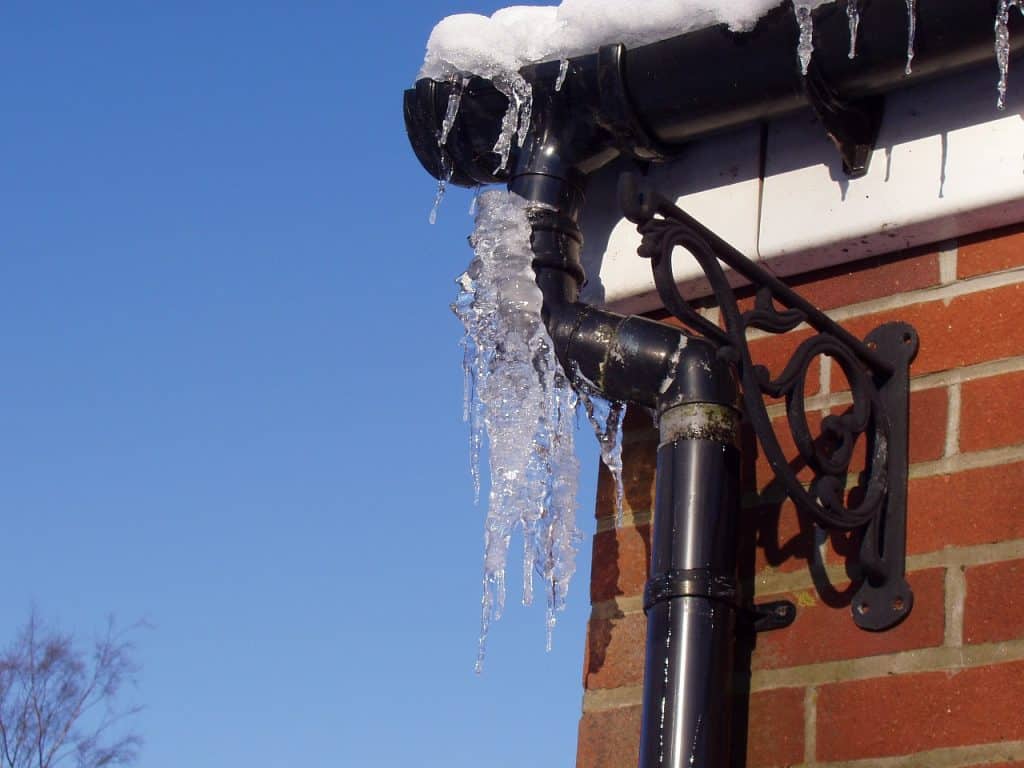Call This Sunday to Get $50 OFF
Call us Now to Get $50 OFF.
Ratings based on 6379 reviews
Local Plumbers, Local Reviews
Call This Sunday to Get $50 OFF
Call us Now to Get $50 OFF.
Ratings based on 6379 reviews
Local Plumbers, Local Reviews

Waking up to frozen pipes is stressful. There’s nothing worse than turning on your faucet and hearing nothing. Mr. Rooter Plumbing is here to help you avoid a crisis. Do you want practical advice to help you tackle frozen pipes with confidence? Keep reading to find out whether they’ll thaw on their own and what you can do to prevent further damage.
The time it takes for a frozen pipe to thaw depends on several factors, including the severity of the freeze, the temperature in your home, and the location of the pipe. If your home is kept warm, pipes located in interior walls might thaw on their own within a few hours. However, outdoor pipes or those in uninsulated areas, like a basement or garage, can remain frozen for much longer without intervention. Relying on nature alone can be risky, especially if the cold weather continues. Frozen water expands and places pressure on the pipe walls. The longer a pipe stays frozen, the higher the chance it will crack or burst. Instead of waiting, addressing the issue quickly can save you from a more expensive repair. Thawing times also depend on the material of the pipe. For example, copper pipes conduct heat more effectively, so they’ll thaw faster when heat is applied, while PVC pipes may take longer. If the temperature outside remains below freezing, even thawed pipes can refreeze, making the problem an ongoing battle.
Thawing frozen pipes without bursting is possible, but it depends on how the situation is handled. If the water inside the pipe is frozen solid, any increase in pressure can lead to cracks or a full burst. Turning on the faucet and applying heat to the pipe might seem logical, but if done incorrectly, it can cause rapid expansion and further damage. The key is to thaw pipes gradually and maintain a steady water flow. Start by slightly opening the faucet connected to the frozen pipe. This allows melted water to escape and relieves pressure inside the pipe. Gradual thawing reduces the risk of pipe damage. However, if you’re unsure about handling the process, it’s safer to call a professional plumber. It's also important to consider whether the pipe was already weakened before freezing. Older plumbing systems are more susceptible to bursting during thawing.
If you’re facing a frozen pipe, there are safe methods to thaw it manually:
Thawing pipes manually requires patience and caution. Rushing the process can lead to damage. If you’re not confident in your ability to handle the situation, a plumbing service can make sure the job is done correctly and safely. Having a professional handle it also helps avoid secondary issues like leaks caused by unnoticed cracks.
The best way to deal with frozen pipes is to prevent them in the first place. Here are some steps to protect your plumbing during winter:
If you suspect frozen pipes, waiting for them to thaw naturally might seem tempting. However, this approach can lead to severe consequences. When a pipe bursts, it can release gallons of water in minutes and cause a lot of water damage to your home. Mr. Rooter Plumbing is ready to provide assistance when you need it most. Whether you need immediate pipe repair, repiping, or advice on winterizing your home, contact our team to schedule your next plumbing service.
When a simple plumbing problem arises, it can ruin your entire day. From sediment buildup in your water…
Read MoreLeaks are among the most common plumbing problems in homes. The EPA estimates that nearly ten percent of…
Read MoreA burst pipe is one of the situations that come in the most unexpected and untimely fashion; it’s…
Read MoreWhen you stand under your showerhead, do you get a weak, dribbling stream? Low water pressure in the…
Read MoreLet’s face it: Your old dripping faucet no longer matches the energy of your kitchen. It is time…
Read More